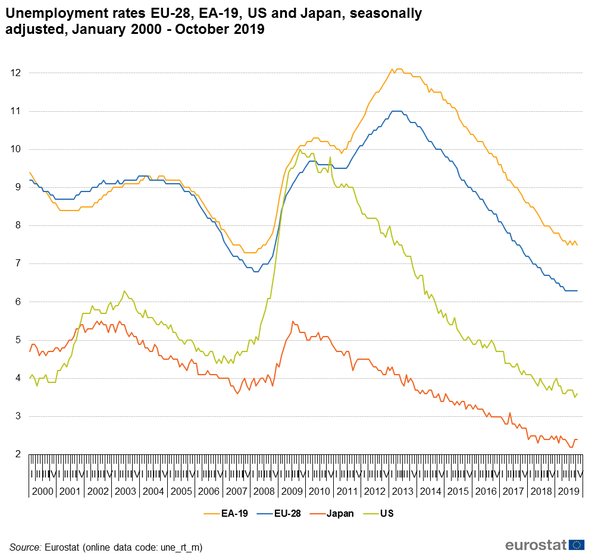Source: eurostat. What did the last decade teach us about (macro-)economics? The graph above is clear: * ‘Drunk driving’ financial crises do happen and cast a long shadow. * Even then, the response to these crises does matter. Eurozone sobriety led to a double dip (in case of unemployment: a double increase). After a crisis, sobriety is not the answer. Remember: the famous ant of the fable of the ant and the grasshopper was not an austerian as he invested in real assets all the time! That’s what we should have done, too. The New Green Deal could have been largely completed by now. * Absent such activities, recovery takes a lot of time * Ideas about ‘natural’ or ‘equilibrium’ unemployment of 5 or 6% turned out to be nonsense. Unemployment can, without problems, go as low as 3 or even
Topics:
Merijn T. Knibbe considers the following as important: Uncategorized
This could be interesting, too:
tom writes The Ukraine war and Europe’s deepening march of folly
Stavros Mavroudeas writes CfP of Marxist Macroeconomic Modelling workgroup – 18th WAPE Forum, Istanbul August 6-8, 2025
Lars Pålsson Syll writes The pretence-of-knowledge syndrome
Dean Baker writes Crypto and Donald Trump’s strategic baseball card reserve

Source: eurostat.
What did the last decade teach us about (macro-)economics? The graph above is clear:
* ‘Drunk driving’ financial crises do happen and cast a long shadow.
* Even then, the response to these crises does matter. Eurozone sobriety led to a double dip (in case of unemployment: a double increase). After a crisis, sobriety is not the answer. Remember: the famous ant of the fable of the ant and the grasshopper was not an austerian as he invested in real assets all the time! That’s what we should have done, too. The New Green Deal could have been largely completed by now.
* Absent such activities, recovery takes a lot of time
* Ideas about ‘natural’ or ‘equilibrium’ unemployment of 5 or 6% turned out to be nonsense. Unemployment can, without problems, go as low as 3 or even 2,5%. Looking at countries (Czech Republic, Iceland) or areas (the Bay area) with low unemployment it seems that only when unemployment is around 2,5% wages really start to increase (which is not necessarily a bad thing, of course). In Bavaria and in fact the entire south of Germany and adjacent parts of Austria even rates of around 2,5% did not lead to extreme wage increases.
* Which means that the high levels of unemployment characteristic for western countries since around 1980 have been a total waste and a scientific sign of a perma slump. What a waste, what a needless misery.
Aside: neoclassical economists like Thomas Sargent, Robert Lucas, Edward Prescott and even Olivier Blanchard and Christopher Pissarides (except for Blanchard all winners of the ‘Sveriges riksbanks pris i ekonomisk vetenskap till Alfred Nobels minne’) did wage a war against the very concept of cyclical and permanent high involuntary unemployement, calling it ‘leisure’ and ‘a choice’. They lost. But as they were, for a time, highly influential we, and especially the unemployed, lost too and, as these economists only lost fame, name and prestige and not jobs and income, the unemployment lost much more.
